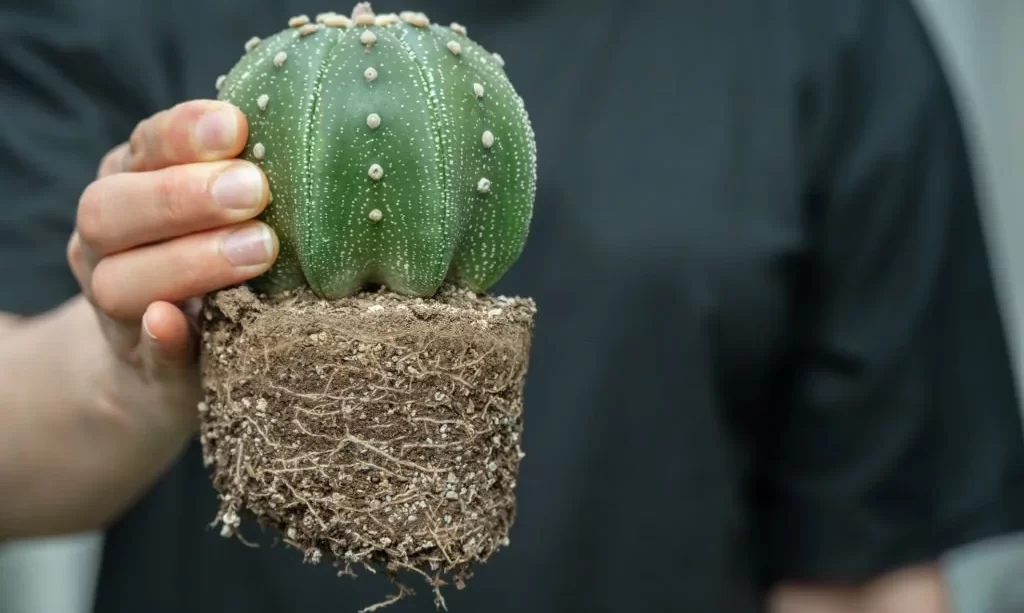Cacti, those iconic desert denizens, have long fascinated botanists and nature enthusiasts alike. Their ability to thrive in some of the most arid and inhospitable environments on Earth is nothing short of astonishing. Yet, when we think of cacti, it’s not their roots that capture our attention; instead, it’s their distinctive, water-storing stems and spiky exteriors that often take the spotlight. This raises a question that’s as intriguing as it is persistent: Do cacti have roots, and if so, what role do these roots play in the life of these desert survivors?
In this article, we embark on a journey beneath the sun-scorched surface of desert landscapes to explore the hidden world of cactus root systems. While cacti are renowned for their ability to endure drought and conserve water, the presence and functions of their roots are lesser-known aspects of their remarkable adaptations. We will delve into the anatomy and functions of cactus roots, uncovering their vital role in the survival and success of these masters of adaptation.
Cacti: Masters of Adaptation
Cacti are the botanical champions of arid environments, where water is a precious and often scarce resource. These unique plants have evolved a suite of adaptations that allow them to flourish in deserts and other dry regions, where many other plant species struggle to survive.
One of the most striking features of cacti is their water-storing stems, which have evolved into iconic shapes like the saguaro’s towering columnar structure or the prickly pear’s flat pads. These stems serve as reservoirs for water, allowing cacti to store substantial amounts of this life-sustaining resource during rare rainfalls and periods of moisture.
Cacti have also developed specialized photosynthesis techniques, like Crassulacean Acid Metabolism (CAM), which enable them to open their stomata at night to minimize water loss through transpiration. This nocturnal carbon fixation strategy is a hallmark of cacti and helps them conserve water in the scorching heat of the day.
However, while the stems and unique photosynthetic adaptations are the most conspicuous parts of cacti, their roots are far from negligible. In the following sections, we will explore the often-overlooked world of cactus root systems, shedding light on their forms, functions, and contributions to the survival of these desert marvels.
Cactus Root Systems
Cactus root systems, though not as prominent as their water-storing stems, are essential for the survival and prosperity of these desert-adapted plants. Understanding the nature of these root systems provides insight into how cacti efficiently manage their water resources in arid environments.
Cacti possess a variety of root system types, adapted to the specific challenges of their habitats. One common adaptation is a shallow, wide-reaching root system. This type of root system allows cacti to quickly absorb rainwater that falls in sporadic desert showers. The roots spread out horizontally, capturing moisture from a large area and channeling it to the stem for storage. This adaptation maximizes their ability to gather water during even brief rainfall events.
In contrast, some cacti also feature taproot systems that delve deep into the soil. These taproots serve multiple purposes. They anchor the cactus firmly in the ground, providing stability during desert winds and sandstorms. Additionally, taproots can access deeper soil layers where water may be stored, allowing the cactus to tap into additional moisture reserves during prolonged droughts.
The combination of shallow and deep roots enables cacti to effectively forage for water, making the most of the sporadic and often meager rainfall in their arid habitats. This adaptability in root structure is a key component of their survival strategy.
Anatomy of Cactus Roots
To understand the anatomy of cactus roots, it’s important to note that they vary between different cactus species and can adapt to their specific environments. Generally, cactus roots are characterized by their fibrous and often shallow structure. These fine, hair-like roots are adept at absorbing water quickly when it becomes available.
In addition to the fibrous roots, some cacti also possess taproots, which are thicker, more substantial roots that extend deeper into the soil. These taproots can vary in length, depending on the species, and are capable of reaching water sources in the deeper soil layers, an invaluable adaptation for cacti in extremely arid regions.
Cactus roots are covered in tiny root hairs that significantly increase the surface area available for water absorption. This feature allows cacti to rapidly absorb moisture from rain or even dew that forms on the soil surface during cool desert nights.
Another intriguing aspect of cactus roots is their ability to form associations with mycorrhizal fungi. These symbiotic relationships enhance nutrient uptake and can extend the effective root system of cacti. In exchange for carbohydrates produced by the cactus, the fungi assist in acquiring essential nutrients from the soil, which can be scarce in desert environments.
These adaptations in root structure and function collectively enable cacti to thrive in some of the world’s most challenging ecosystems. In the following sections, we will delve deeper into the roles cactus roots play in water storage and how they contribute to the resilience of these remarkable desert plants.
The Role of Cactus Roots in Water Storage
One of the most critical functions of cactus roots is their role in water storage. In arid environments where water is scarce and unpredictable, cacti have evolved to be masters of water conservation. The roots are an integral part of this strategy.
When cacti encounter a rare rainfall event in the desert, their specialized roots quickly absorb the precious moisture from the soil. This absorbed water is then transported through the plant to be stored in its succulent stems. These stems have evolved to swell and expand as they store water, becoming plump and turgid during wet periods.
As the desert sun relentlessly beats down, causing the soil to dry out rapidly, the cactus draws upon its stored water reserves to survive. The roots continue to play a role by constantly seeking out any available moisture in the soil. Even minute traces of water are sought after, helping the cactus sustain itself through long periods of drought.
The ability to efficiently store and utilize water is a hallmark of cacti and is what allows them to endure the harsh conditions of arid regions. Without the crucial contribution of their roots, these plants would not have the capacity to thrive in environments where many others wither and perish.
Cacti and Mycorrhizal Associations
Cacti, in their quest to adapt to the demanding conditions of desert life, have formed fascinating partnerships with mycorrhizal fungi. These symbiotic relationships enhance nutrient uptake and contribute to the overall resilience of cacti.
Mycorrhizal fungi are present in the soil and have the ability to extend the effective root system of cacti. They form connections with the cactus roots, creating a mutually beneficial bond. The cactus provides carbohydrates to the fungi through photosynthesis, while the fungi, in turn, help the cactus acquire essential nutrients from the soil, such as phosphorus and nitrogen.
This association is especially valuable in nutrient-poor desert soils. The mycorrhizal network effectively expands the cactus’s reach, allowing it to access nutrients that might be scarce or less available to non-mycorrhizal plants.
Cacti’s ability to establish mycorrhizal associations demonstrates their remarkable adaptability and resourcefulness in making the most of their harsh surroundings.
Conclusion
In conclusion, the roots of cacti, often overshadowed by their iconic water-storing stems and spiky exteriors, play a vital and multifaceted role in the survival and prosperity of these desert-dwelling marvels. Through their adaptability in root structure, including shallow and deep roots, cacti efficiently manage the sporadic and limited water resources of arid environments.
Cactus roots are not just passive water absorbers; they are active foragers, constantly seeking out any available moisture in the parched desert soil. This determination allows cacti to thrive in some of the world’s driest and most challenging ecosystems.
Furthermore, cacti’s ability to form mycorrhizal associations showcases their ingenious adaptability. These symbiotic relationships enhance nutrient uptake and expand the cactus’s reach in nutrient-poor soils, further contributing to their resilience.
So, the next time you encounter a cactus in the desert, take a moment to appreciate not only its striking appearance but also the hidden world beneath the surface – a world where its roots play a crucial role in the survival of a true desert survivor.




